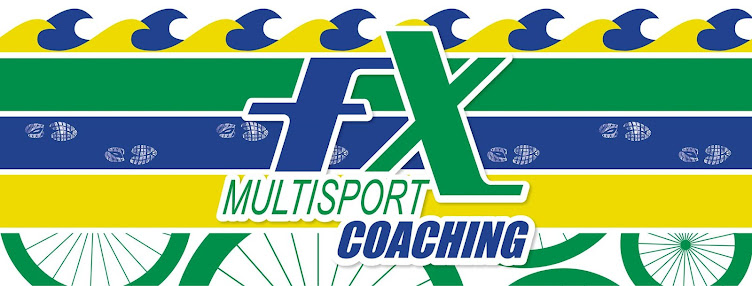This weekend, Team FX Multisport enjoyed a group workout. We rode a nice 40 mile group ride followed by a 3 mile brick run. During the workout, I was able to set eyes on each of the athletes and provide feedback on their cycling and running technique. These observations prompted me to write this blog article specific to running. I hope that someone finds it helpful. There is nothing technical about how to run efficiently. I do not use fancy power meters or pedometers. Running is something the athlete should feel, in their body, mind & soul.
Running Efficiently
As runners, we all want to run faster, without injury. The big question and highly debated topic on everyone's mind, how do we do that? Let's discuss two factors that determine speed; Increasing,
1: Stride rate (the frequency of your stride, or how often you take a stride)
2: Stride length (the length of each stride across the ground)
Athletes often find that trying to increase both at the same time, is too stressful. The heart rate spikes and while initially you may run faster, it is short lived. If a runner feels it is difficult or frustrating, they give up the attempt & revert into their old habits. Running efficiently is a process that takes time to develop proper technique. The body must adapt to the stresses (adaptation) of change.
Stride Rate
So to simplify, lets talk about stride rate first; the foot turnover or cadence. We want to establish both proper running mechanics and aerobic efficiency. Aerobic efficiency is extremely important because it allows runners to hold on to their new speed for longer periods of time. How does stride rate affect running mechanics? Running with a higher turnover (stride rate or cadence) allows runners to:
-establish a slightly forward leaning body position, (better)
-produce a foot strike position closer to the center of your foot, (better)
-use less energy per stride, (efficient)
-decrease ground contact
-decrease vertical oscillation,
-increase forward propulsion
Adaptation
During the initial base building phase, I recommend focusing on stride rate instead of speed to build a solid foundation. This will allow for gaining running speed in the future decreasing chance for injury. Initially, you will have to run slower. Adaption is a process that takes time, It will not happen over night. The aerobic system will also adapt, heart rate will be higher at first until adaptation takes place.
A Higher Cadence
A higher cadence or turnover can change your running form in many ways. To begin:
a) take with more steps in the course of a minute without increasing your pace
b) shorten your stride length
The most efficient & best way to start this is to practice on a treadmill. Set the speed on the treadmill so you can focus on stride rate. The constant speed in effect ensures that an increasing stride rate will result in a shorter stride length. Several benefits will occur: this shorter stride length will bring your foot strike more beneath your body allowing you to run more center foot, use less energy per stride and reduce ground contact. If this is a new practice, it can be aerobically challenging. So don't push it, let the run feel as easy as possible at first. To establish a new running fort & initiate change, you will want to focus on this higher cadence during all of your runs until your cardiovascular system has adapted.
Our goal cadence should be low 90's. You can count the number of time one foot hits the ground in one minute, if you don't have a fancy cadence monitor. If you are already running with a cadence in the 90's (or 180's) if counting bilateral, then kudos to you. Once that is established we can work on strengthening & pacing. That development comes later in the training cycle when we work on hills & speed.
Final thought, if you are not already running with a high cadence, it is definitely worth thinking about & incorporating into your run practice. Get on the treadmill, shorten your stride, increase your stride rate & run smooth and easy until it is natural. Think about being quick & light on your feet. Bring your shoulders back, chin up & run with proud posture. If you practice it in training, you will run faster & stronger & more efficient on race day.
Happy Running, Coach Robyn



